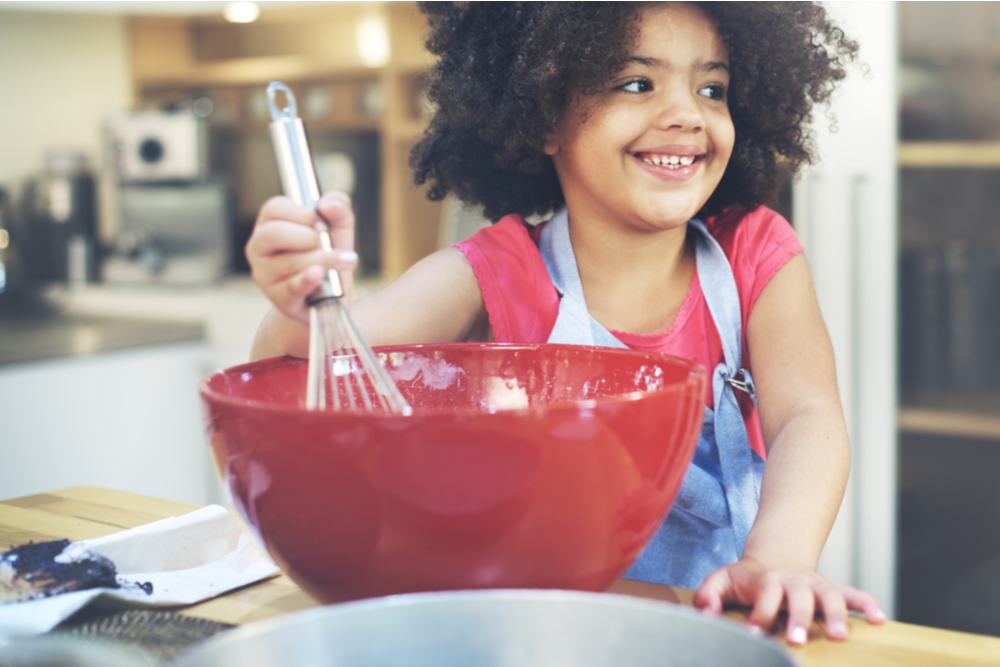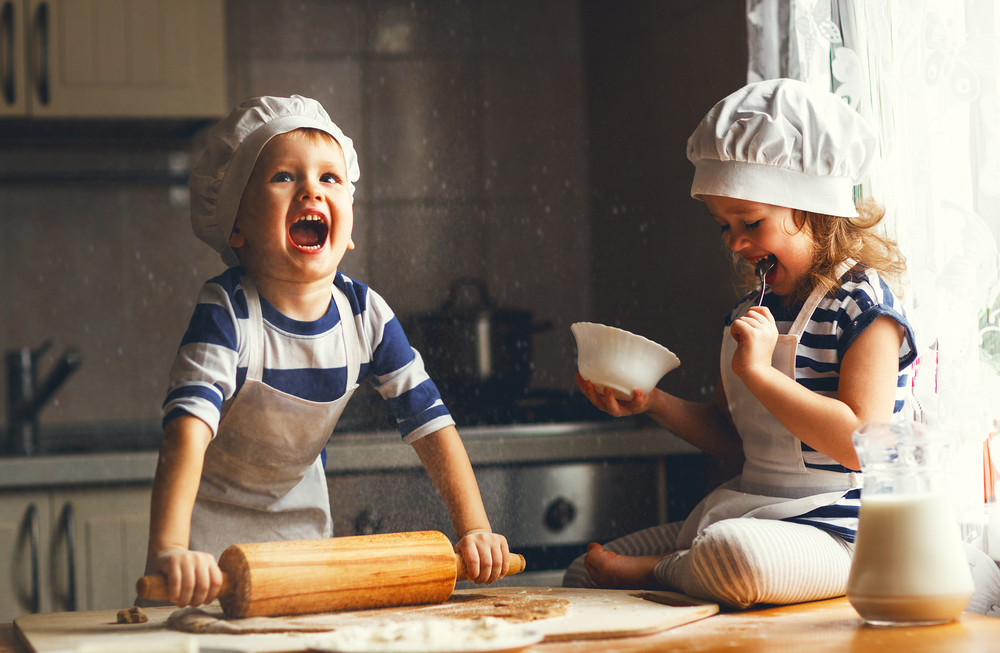
Depending on where you live, Covid restrictions may be ramping up again. Or maybe restrictions have relaxed a bit. Regardless, life as we know it has changed. Many kids faced canceled sports and a canceled in person fall semester, and home is now the epicenter of our limited environment. Television shows, online games and chats may be the way to stay connected. And perhaps these virtual means of entertainment are getting dull and tiresome. Mix up the routine—literally—and help kids practice reading, too. Cook up some reading with your family recipes while kids are stuck at home!
Yes, reading and following recipes is an easy way to get kids to read and allow them to take an active role in the kitchen. Of course, the end result is great food…and some happy memories.
Ready to get cooking? Here’s some helpful hints on how to turn dinner or lunch prep into a fun literacy lesson.
Pick Your Recipes
Choose recipes that are meaningful to your family. These can be favorite dishes or family secret recipes. Family recipes are unique and can make kids feel connected to their relatives and their culture. When choosing recipes, keep in mind:
Time. Kids don’t have unlimited patience. Choose recipes that don’t try a child’s patience. Fancy dishes that take hours probably aren’t a wise choice. Homemade mac and cheese that can be prepped in half-an-hour is a great choice, though!
Kid-friendly foods. Also choose recipes you know your kids will eat. Or at least try to eat. Choosing unique or new recipes is fine, and it may encourage kids to try new foods. Cooking a recipe gets them involved and helps them feel vested in the meal. If you know your kid is a picky eater, though, it may be best to stick with something they love.
Difficulty. Too many steps in a recipe could cause a child to become frustrated. Cooking together is a bonding experience and it should be fun. Avoid recipes that can overwhelm kids.
Kid-appropriate prep. Some recipes call for a LOT of chopping, cutting, pureeing, etc. If the recipe involves too many steps that aren’t kid-friendly or appropriate for a child, maybe select something else. Otherwise, your child may be sitting on the sidelines bored. PBS offers several great recipes to cook with kids.
Gather the Ingredients
Before you start cooking or prepping, have your child read all the ingredients needed for the recipe. Then go on an ingredient scavenger hunt (sight words may be among those ingredients) to make sure you have everything you need to make the meal. Missing something? Head to the store and have your child help you find all the missing items.

Get Cooking…and Reading
If you’re cooking with more than one child, have them alternate reading the recipe. Or, if you’re cooking an entire dinner together with multiple recipes, designate a recipe for each child.
Let your child read each step of the recipe as needed. Then ask them what the directions mean. Reading recipes requires cooks to comprehend the meaning of those steps; this is why parents should ask questions during the recipe prep.
Have your child help you as you prepare each step of the recipe (unless the step isn’t safe for a child!). If your child stumbles over a word, encourage them to sound it out…and help them as needed.
Measuring and Math
Recipes aren’t just a great way to encourage children to read, but cooking also encourages them to hone their math skills. Let children measure out ingredients; put all the measuring cups and spoons on the counter and let them choose the appropriate option. If they struggle, help them figure out what to select.
Measuring wet ingredients can get messy, and kids will need to pay attention to measuring lines on the cups. Before prep begins, parents should let children look at the measuring cups to see lines and measurements and understand how these tools work.
When recipes need to be doubled, grab a piece of paper and pencil and help children figure out the right amounts. Exercises in doubling recipes may be best suited to older elementary-age children, however.
Celebrating—and Eating!—the End Result
The best part about using recipes for reading exercises is that there is a tasty reward at the end. Kids also may feel a sense of accomplishment after completing the different tasks and directions needed to create a dish. Compliment kids on a job—and a dish—well done!
When the Dish…Flops
Cooking mishaps happen to everyone. A missed ingredient or skipped step can turn a tasty dish into an inedible mess. Maybe the dish was overcooked or undercooked. If your dinner turns into a flop, use it as a teaching lesson.
Talk to kids about what went wrong. Explain that sometimes mistakes happen, and that’s ok. Learning is all about making mistakes. At some point or another, even the best cooks have made a mistake.
When the dish flops, make something simple. Or order out. Then get back into the kitchen and try again. After all, practice makes perfect…in reading and cooking!

 Español
Español